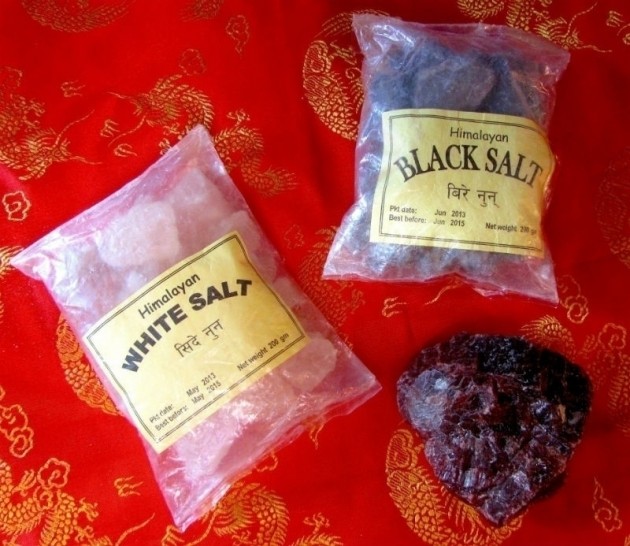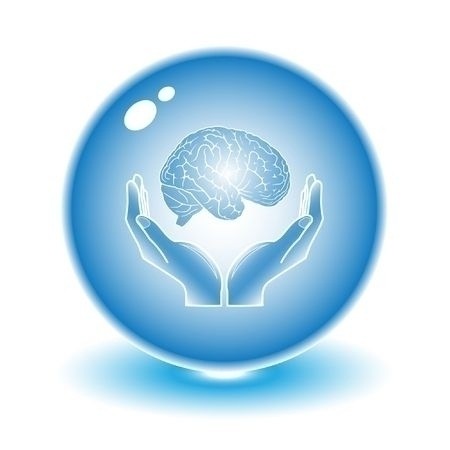Myofibrositis
Scar-type tissue causing restriction of tissue motion. Traumatic tearing of soft tissues or long standing muscle spasms cause production of thixotropic gel which organizes itself into collagen scar tissue. This is the body's attempt to stabilize what is perceived as injury. Three problems result from this scar formation:
General Symptoms of Radio Wave Sickness
Question: What are the general symptoms of radio wave sickness?
Infrared Sauna
Welcome to the Ecopolitan's Infrared Sauna. Relax in the cedar chamber for infrared treatment anytime you wish. Step in and listen to music, read or meditate as you experience the therapeutic benefits of Ecopolitan's infrared thermal sauna. You'll emerge feeling refreshed, detoxified and rejuvenated. Call us at: 612-87-GREEN (612-874-7336) to schedule a session, or just stop by during...
Sciatica
A specific entity with many causes. Involves inflammation of the great sciatic nerve and presents as acute or chronic pain down the back of the leg originating in the buttock and extending to the foot. Pressure can originate in the nerve roots, as in discopathy or facet syndrome, or can be caused by the gluteal muscles or piriformis tightening over the nerve. Gluteal muscle spasm is often...
Sprain / Strain
Sprain: Wrenching or twisting of a joint with partial rupture of its attaching ligaments. Strain: Over-stretching a muscle. Invariably, both conditions are trauma-induced. Of the two, the sprain is the more serious. There are three classifications of a sprain: Grade 1: Mild/minimal sprain with no ligamentous tear. There may be pain, swelling and tenderness....
Stress
The many faces of stress Stress manifests differently depending on the individual, influencing many biological processes that begin in the brain and spread through nearly all body systems - including the adrenals, thyroid, neurotransmitter systems, digestive system, and heart. Consistent stress over long periods of time can become a serious threat to maintaining lifelong wellness as so much energy...
Tendinitis
Inflammation of the tendon and the lining of the tendon sheath. The sheath is typically the focus of the involvement, but the body's inflammatory response usually involves the tendon, too. The etiology is unknown, although repetitive or forceful trauma, exercise or strain, systemic diseases (rheumatoid arthritis, gout, Reiter's syndrome) and hypercholesterolemia are implicated.
Novadermy - Frequently Asked Questions
How is Novadermy different from other rejuvenation procedures? This procedure is NOT a face lift, it is not a temporary superficial chemical peel, and no toxins are injected into the face. Novadermy has successfully prevented many people from having surgery, which has many side effects, including scarring, long recovery time, altered facial structure, toxicity (anesthetics and their many...
Raw Food - Monitoring your Health
Question: Hello Dr. T- Hope all is going well! Here is a question I just got & thought you could help with a better answer. Thanks - "Lorie". "Lorie", when you first started on the 100% raw diet, did you consult with a physician and got blood work done to make sure you're on the right track? H. told me briefly about the muscle test and we did read about it...
Reducing Cholesterol Naturally
Question: I have been told that I have a total cholesterol of 278/HDL of 60. My doctor put me on a statin which was not good for my liver. He then put me on another statin which caused muscle aches, nausea, and lethargy. What can I do that will be more natural but get my cholesterol down?
Reducing Cholesterol Naturally
Question: I have been told that I have a total cholesterol of 278/HDL of 60. My doctor put me on a statin which was not good for my liver. He then put me on another statin which caused muscle aches, nausea, and lethargy. What can I do that will be more natural but get my cholesterol down?
Electrical Pollution, Its Health Effects, and the Solution
The following article was sent to our newsletter subscriber at January, 2005. Visit our new EMF Pollution Remediation website for updated articles, solutions, and certification courses.
Acid Reflux - Gastroesophageal Reflux Disease
Gastroesophageal reflux disease (GERD) is a disorder in which contents of the stomach or small intestine repeatedly move back up into the esophagus (tube connecting the throat to the stomach). This regurgitating action is called reflux. Reflux causes heartburn, and although most people have an attack of heartburn at some point in their lives, persistent reflux and severe heartburn may indicate...
ADD / ADHD
Attention deficit/hyperactivity disorder (ADHD) is the most commonly diagnosed behavioral disorder of childhood, estimated to affect between 3% and 5% of school-aged children. The core symptoms of ADHD include inattention, hyperactivity, and impulsivity. Although many people occasionally have difficulty sitting still, paying attention, or controlling impulsive behavior, these behaviors are so...
Alzheimer's Disease
Adapted from the book "BrainRecovery.com" by David Perlmutter, MD Board-Certified Neurologist At present, approximately 4.5 million Americans have Alzheimer's disease. By the year 2030, it has been estimated that this number will approach 9 million. Prevalence of Alzheimer's disease has been estimated to be 50% in individuals 85 years or older-the most rapidly growing segment of...
Angina Pectoris
Angina Pectoris is defined as Acute pain in the chest resulting from decreased blood supply to the heart muscle (myocardial ischemia). A syndrome due to myocardial oxygen deficit, characterized by prolonged substernal, thoracic pain which is precipitated chiefly by emotion, exercise, or the ingestion of a heavy meal. It is caused by a temporary inability of the...
Ankylosis Spondylitis
Ankylosis Spondylitis is defined as a chronic and generally progressive inflammatory arthritic disease affecting the spinal joints and adjacent connective tissues. Also called "Marie Strumpell Disease." This appears to be a disease mainly of young men aged 10-30 years old. It seems to have a genetic component, as it is seen in male relatives and especially in patients with...
Asthma
Asthma is a disease in which inflammation of the airways restricts airflow in and out of the lungs. The word asthma comes from the Greek word for "panting." The panting and wheezing sound characteristic of asthma occur because of the restricted flow of air. Normally, when you breathe in an irritant or are subjected to a stressor such as exercise, your airways relax and open, allowing...
Autoimmune Conditions
Examples of autoimmune conditions include the following: Rheumatoid arthritis (RA) Type 1 diabetes Crohn's Disease Hashimoto's thyroiditis Neurological diseases Multiple Sclerosis (MS) Glomerulanephritis Pernicious Anaemia Goodpasture's syndrome Scleroderma Raynaud's Phenomenon Lupus (e.g., systemic lupus erythematosus [SLE]) Inflammatory bowel disease (IBD)...
Blood Interpretation
Cholesterol Cholesterol values should only be analyzed after a 12 hour fast. Further, the physician must be aware that the patient's posture prior to the blood draw is significant. If the patient has been in a recumbent posture for more than 20 minutes, cholesterol values may be up to 15% lower than normal. Cholesterol is a blood fat which is the prime building block component to make...
Blood Sugar Dysregulation / Metabolic Syndrome
General nutritional support strategies for individuals with any dysglycemic response. i.e. Metabolic Syndrome (lnsulin Resistance and Hyperinsulinemia) Type II Diabetes Reactive Hypoglycemia. NOTE: "Type 1 Diabetes" see Autoimmune Section
Body Composition
All experts agree that obesity, even being overweight, contributes heavily to all degenerative disease. The United States Surgeon General stated that a failure to address excessive weight and obesity "could wipe out the gains we've made in areas such as heart disease, several forms of cancer, and other chronic health problems." Although attempts to lose weight are common in the...
Bursitis
Bursitis is an Acute or chronic inflammation in a bursa. Bursae are thin-walled sacs lined with synovial fluid and function to lubricate and ease the movement of the tendons and muscles over bony prominences. Causes of bursitis include trauma; systemic disease (such as arthritis or rheumatoid arthritis); gout; repetitive or excessive frictional force; or infection. Most commonly, bursitis is...
Candida Albicans
Candidiasis is an infection with a fungus of the Candida strain, usually limited to the skin and mucous membranes, but sometimes is systemic and life-threatening. Candida albicans are a single cell yeast/fungus that is found in practically 100% of the population. It lives on the mucous membranes of the body, the digestive/intestinal tract, vagina and the skin. MOST...
Cardiovascular Disease
Definitions of Cardiovascular Disease Risk Factors Total cholesterol Cholesterol is a waxy fat like substance. Total cholesterol refers to the sum of the different sub-fractions of cholesterol that are measured in the blood. Total cholesterol is an independent risk factor for cardiovascular disease. The National Cholesterol Education Program says 240 is considered high. A person with this level...
Carpal Tunnel Syndrome
An entrapment neuropathy of the median nerve and, less commonly, compression of the finger flexor tendons, producing paresthesia, atrophy, and weakness in the affected hand. The syndrome is caused by continuous pressure on the median nerve as it passes through the anterior carpal tunnel, which is defined by the carpal bones (proximally: pisiform and the tubercle of the navicular; distally: hook of...
Cerebral Palsy
Pathological Considerations Also called Little's Disease or Congenital Spastic Paralysis, this condition is usually the result of developmental defects in the brain or central nervous system or from trauma at birth. It is a non-progressive, symmetrical and bilateral paralysis although the physical and mental defects may not be fully evident for several years after birth. ...
Chronic Fatigue Syndrome
Chronic, persistent or relapsing debilitating fatigue or easily fatigued, that does not resolve with bed rest and that is severe enough to reduce or impair average daily activity below 50% of premorbid activity level. Associated symptoms: mild fever, sore throat, painful lymph nodes, muscle weakness, myalgia headaches, arthralgia, neuro- psychological complaints, sleep disturbances.
Detoxification
Low-level, long-term exposure to toxins such as heavy metals (e.g. lead, mercury, PSP, and cadmium), pesticides, industrial compounds, and pollutants is associated with chronic fatigue syndrome (CFS), multiple chemical sensitivities (MCS), fibromyalgia (FM), neurodegenerative diseases such as Parkinson's disease and atherosclerosis as well as many types of cancers. Common signs and...
Ear Dysfunction - Infection (Otitis Media)
Acute otitis media is a viral or bacterial infection of the middle ear, usually secondary to a URI. It is most common in children six to 36 months old and then again at 4-7 years old. It is the most frequent diagnosis of children in a clinical setting, and it is estimated that about 2 billion dollars spent each year for conventional medical and surgical treatment of the condition.
Enuresis (Bed-Wetting)
Loss of control of the bladder by day, by night, or both. Not limited to young children. Many adolescents and adults are afflicted in this way, either constantly or in times of stress or anxiety. Dr. John W. Gerard, Professor of Pediatrics at the University of Saskatchewan, presents evidence that bedwetting is sometimes the result of an allergy. "The prime problem is that the bedwetting...
Eye Conditions
Cataracts Cataracts are clumps of protein that collect on the lens of an eye and interfere with vision. Normally, light passes through the lens (the clear tissue behind the pupil) and focuses on the retina. The retina is the light-sensitive layer of the eye that sends visual signals to the brain. A cataract occurs when the normally clear lens becomes cloudy. Most cataracts develop slowly...
Facet Syndrome
Facet syndrome is used to describe chronic or acute inflammation of the articular facet joints which guide vertebral motion. These joints are lined by cartilage and surrounded by capsular ligaments which are richly innervated by pain fibers. These joints are inflamed by trauma (as in flexion/extension injuries; "whiplash") or in overloading injuries such as lifting a heavy load and...
Female Conditions
Amenorrhea Absence of menstruation. Amenorrhea may be primary (the girl has never begun her periods) or secondary (the woman had her periods once and then stopped having them). Physiologic amenorrhea is the lack of menses before menarche, during pregnancy and early lactation, and after menopause (all considered normal). All other causes of amenorrhea are pathologic. Causes of Primary...
Fibromyalgia
Adapted from "Nutritional Therapies for Fibromyalgia Syndrome", written by Kristi Hughes, ND Fibromyalgia is a syndrome characterized by generalized musculoskeletal pain and stiffness, chronic aching, fatigue, and multiple areas of local tenderness that can be identified during physical examination. Research studies suggest that fibromyalgia pain may be the result of a...
Fracture
Any break in a bone. There are many types of fractures:
Frozen Shoulder
A syndrome in which a stiff shoulder is restricted and painful in both active and passive movement. Also known as adhesive capsulitis, periarthritis, and pericapsulitis. The involved joints are the scapulothoracic and glenohumeral. There is no bony ankylosis. Causes include any type of pain in the shoulder upon movement, and immobilization from shoulder injury. Frozen shoulder is seen most often...
Headache: Nonvascular
Headache without vascular cause. The most commonly diagnosed condition in the United States with 70% of these caused by muscle tension. Causes include suboccipital muscle spasms from injury (whiplash), postural strain (caused, for example, by a computer screen angled incorrectly), pillow too large that forces flexion of the neck during rest. Usually gradual onset, but tends to persist in cyclical...
Headache: Vascular / Migraine
Headaches from vascular disturbance. There are several types of vascular headaches: Migraine: Periodic throbbing headaches. The prodrome seems to be due to a vasoconstriction of the cerebral blood vessels (or the vessels leading into the brain), while the headache itself seems to be due to a vasodilation of the blood vessels with subsequent congestion of tissues; seen more often in women...
Inflammatory Bowel Disease (IBD)
Crohn's Disease, Ulcerative Colitis, Irritable Bowel Syndrome, and Celiac Disease
Influenza
Influenza, or "flu," is a common infection caused by a virus affecting the respiratory tract (like the nose and upper airways). Its symptoms are usually more severe than the common cold and are more likely to affect other parts of your body like your stomach and muscles. The flu is very contagious - spreading easily from one person to the next. While most cases run their course in...
Intervertebral Disc Disease
Rupture of the annulus fibroses causing leaking of the nucleus pulposus into the intradural space. Also called herniated disc, herniated nucleus pulposus, ruptured disc, or disc syndrome. The cause is degeneration of the fibers of the annulus fibrosus, or trauma of the area leading to the rupture of the annulus. Rupture usually occurs at middle age or older. Then, the normal pressure that...
Low Back Pain
Pain felt either in the lumbar, lumbosacral, or sacroiliac areas. Most low back pain is from degenerative joint disease in the lumbosacral region, poor posture, the beer belly, constipation, and stress-induced myospasms of the lumbosacral region. Low back pain is commonly associated with sciatica. The prognosis depends on the cause. Generally, the condition is benign and the prognosis is...
Multiple Sclerosis
Nearly 350,000 Americans are affected by one of medicine's most misunderstood diseases, multiple sclerosis. Although there is no known cure, alternative medicine has recognized a number of contributing factors. Often, the early detection and identification of underlying causes combined with strict dietary and life-style guidelines can stabilize or reverse the symptoms.
Common sources of radio waves radiation
Some common sources of radio waves radiation are: Outdoors Broadcast antennas (fixed); Broadcast antennas (mobile); Radar stations (fixed); Radar devices (mobile); Television cables; Satellites; Satellite receiving dishes; Satellite sending dishes; Cell phones, pagers, two-way radios.
Osteoporosis
A decreased density of bone compared to normal bone mass of age and sex matched controls. It is the most prevalent bone disease in the world. There are many factors that can contribute to osteoporosis, the most common is postmenopausal, estrogen deficient osteoporosis. More than one-half of women in the United States who are 50 years of age or older will have documented osteoporosis,...
Parathyroid Conditions
Hypoparathyroidism There are four parathyroid glands, located near each of the two lobes of the thyroid gland. The parathyroids produce parathyroid hormones that regulate blood levels of calcium necessary for strong bones and teeth, nerve function, and blood clotting. Hypoparathyroidism is a rare disorder associated with insufficient production of parathyroid hormone, the inability to make a...
Parkinson's Disease
A chronic progressive CNS disorder characterized by slowness of purposeful movement, resting tremors, and muscle rigidity. Also called "Parkinsonism" and "Paralysis Agitans" Dorland's Medical Dictionary describes the Parkinsonian complex as "neurologic disorders characterized by hypokinesia, tremors and muscular rigidity. It typically occurs late in life,...
Polymyalgia Rheumatica
What is polymyalgia rheumatica? Polymyalgia rheumatica (pronounced pah-lee-my-al-jah room-at-i-ca) is a type of arthritis that affects the muscles. It does not affect the bones, or the joints, which are the spots where two bones come together. It causes muscles to become stiff, tender and very sore. This is called inflammation. Even though the muscles are sore they do not become weak.
Restless Legs Syndrome and Leg Cramps
Leg Cramps: Nocturnal leg cramps constitute a relatively common complaint in the general practice of medicine and may be very distressing to the patient. Not only is the cause obscure and the treatment relatively unsatisfactory, but even its proper medical name, systremma (anything twisted up together), is unknown to most physicians.
Rheumatoid Arthritis
The Natural Approach Rheumatoid arthritis is a chronic inflammatory condition that affects the entire body but especially the synovial membranes of the joints. It is a classic example of an "autoimmune disease," a condition in which the body's immune system attacks the body's own tissue. Although rheumatoid arthritis is a systemic disease, it affects primarily the joints. The...
Way Too Much Protein
Many of you may have heard Dr. T talk about protein and how too much protein can be compromising your health. He uses the analogy that protein is dirty fuel and it is like running it through your engine without a catalytic converter. There are many reasons to not over consume on protein and I would like to comment and share additional reason to the rhyme.
October 2014 Thailand Adventure
Authentic Thailand - Tropical Fruit, Vegan Thai Cuisine, and Beachfront Retreat 7 days with Dr. T, plus his revolutionary Vmix Bone & Muscle Strength & Toning Routine! This adventure starts immediately after Dr. T's Humanitarian Eco-Trek in Nepal (October 14-27) - both trips can be combined to introduce 2 countries instead of one, for the same long flight...
Spring 2016 Thailand Retreat
Authentic Thailand - Tropical Fruit, Vegan Thai Cuisine, and Beachfront Retreat: March 29 - April 4, 2016
October 2015 Thailand Retreat
7 days with Dr. T, plus his revolutionary Vmix Bone & Muscle Strength & Toning Routine! This adventure starts immediately prior to Dr. T's Humanitarian Eco-Trek in Nepal (October 22-November 3) - both trips can be combined to introduce 2 countries instead of one, for the same long flight...
March 2015 Thailand Retreat
days with Dr. T, plus his revolutionary Vmix Bone & Muscle Strength & Toning Routine! This adventure starts immediately prior to Dr. T's Humanitarian Eco-Trek in Nepal (March 15-28) - both trips can be combined to introduce 2 countries instead of one, for the same long flight...








